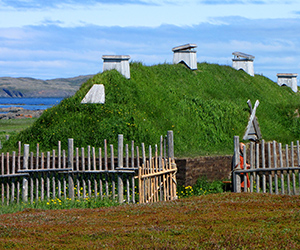CANADA HISTORY
Rebellion

The Northwest Rebellion of 1885, led by Louis Riel and his Métis and Indigenous followers, was a turning point in Canadian history that had profound effects on the development of the Canadian West, the relations between Indigenous peoples and the Canadian government, and the broader political and cultural divide between French and English Canada. It was a period marked by economic growth, mass migration, and the expansion of Canadian influence into the western territories, driven by the ambitions of Prime Minister Sir John A. Macdonald’s National Policy. This expansion, however, came at a great cost to the Métis and Indigenous populations, who saw their way of life threatened by settler encroachment, resource exploitation, and the rapid development of the railway system.
The Expansion of Manitoba and the Displacement of the Métis
Following the creation of Manitoba in 1870, the province experienced explosive growth, with settlers pouring in from Ontario, Britain, and the United States. These settlers quickly began acquiring land, establishing farms, and setting up businesses in urban centres like Winnipeg. Law and order followed closely behind, with the presence of government institutions solidifying the Canadian state’s authority over the newly settled regions. However, as these settlers spread across Manitoba, the Métis population, which had played a crucial role in the Red River Resistance and the province's founding, found themselves increasingly marginalized.
The Métis were a mixed-race community of Indigenous peoples and European (largely French) fur traders, and they had developed a unique culture centred around buffalo hunting, trading, and small-scale farming. The rapid influx of settlers, coupled with the Canadian government’s push for land acquisition and settlement, disrupted the Métis way of life. Many Métis were forced to leave Manitoba and migrate further west into what is now Saskatchewan, seeking freedom from government control and a continuation of their traditional lifestyle.
This migration brought the Métis into the Saskatchewan River Valley, where they joined Indigenous groups such as the Cree and Assiniboine, who were also reliant on the dwindling buffalo herds. As the Canadian Pacific Railway pushed westward, the construction process required a massive workforce, and to feed this workforce, buffalo hunters were hired to track and slaughter the great buffalo herds that roamed the northwest. The once-vast herds, already in decline due to overhunting and environmental changes, were decimated. This depletion of buffalo further threatened the survival of the Métis and Indigenous peoples, who relied on the animals for food, clothing, and materials for shelter.
The Push for Treaties and Rising Discontent
As buffalo herds disappeared, many Indigenous groups faced starvation. The Canadian government, represented by the North-West Mounted Police (NWMP), encouraged Indigenous leaders to sign treaties that would cede their land in exchange for government support and designated reserve lands. However, these treaties often failed to provide sufficient resources for the Indigenous peoples to survive, especially during harsh winters. The promised government rations were inadequate, and many Indigenous communities were left struggling.
This growing unrest led both the Métis and Indigenous peoples to recall Louis Riel, the charismatic leader who had previously led the Red River Resistance in Manitoba, securing Métis rights and land guarantees from the Canadian government. At the time, Riel was living in exile in Montana, having fled Canada after the events of 1870. His followers viewed him as a symbol of hope and resistance, someone who could once again advocate for their rights and push back against the encroaching Canadian state.
In July 1884, Riel returned to Batoche, a Métis settlement in Saskatchewan, and began to organize a political and military response to the growing pressures faced by the Métis and Indigenous peoples. His goal was to negotiate a better deal with the Canadian government, similar to his earlier success. He presented a list of grievances to Ottawa, outlining the Métis and Indigenous demands for recognition of their land rights, better government support, and the establishment of a fair and just system for Indigenous peoples in the West.
The Failure of Negotiations and the Outbreak of Rebellion
Unfortunately for Riel and his followers, the Canadian government, under the leadership of Sir John A. Macdonald, failed to address their grievances. In March 1885, frustrated by Ottawa’s lack of response, Riel declared the establishment of a provisional government in Batoche, with the intention of securing Métis and Indigenous rights through both political and military means. He appointed Gabriel Dumont, a renowned buffalo hunter and military strategist, as his commander.
Riel's decision to take up arms, however, led to a swift and violent confrontation with Canadian authorities. In March 1885, a skirmish broke out at Duck Lake between Dumont’s forces and the NWMP, resulting in the deaths of 10 officers. This marked the beginning of what would come to be known as the Northwest Rebellion, a conflict that pitted Riel’s Métis and Indigenous forces against the Canadian government.
The rebellion quickly escalated as Indigenous leaders, such as Chief Poundmaker and Chief Big Bear, joined the fight. Both chiefs led attacks on settler communities, including the Battleford and Frog Lake incidents, where NWMP posts were burned, and several settlers and officers were killed. These events caused widespread panic among the settler population and prompted a decisive response from Ottawa.
The Role of the Railway and the Suppression of the Rebellion
The Canadian government, which had already begun construction of the Canadian Pacific Railway (CPR), saw the Northwest Rebellion as an opportunity to demonstrate the strategic importance of the railway. Sir John A. Macdonald dispatched Major General Frederick Middleton with a force of over 5,000 troops to suppress the rebellion. Thanks to the newly completed sections of the railway, Middleton’s troops were able to move rapidly across the vast distances of the Prairies, a feat that would have been impossible just a few years earlier. The railway, one of the key pillars of Macdonald’s National Policy, had proven its value as both a tool of economic development and military logistics.
Middleton’s forces launched a three-pronged attack, targeting Batoche, Battleford, and Frog Lake. After several weeks of fighting, the rebellion was crushed. Dumont and other leaders fled to the United States, while Riel was captured on May 15, 1885, following the defeat of his forces at Batoche.
The Trial and Execution of Louis Riel
The capture and subsequent trial of Louis Riel became one of the most controversial events in Canadian history. Riel was charged with treason for his role in leading the rebellion. His trial, held in Regina, became a flashpoint for tensions between English and French Canadians. Many English-speaking Canadians viewed Riel as a traitor who had incited violence and rebellion against the Canadian state. Conversely, French Canadians saw him as a martyr, someone who had stood up for the rights of the Métis and the French-speaking population in Canada.
Although there were widespread calls for clemency, particularly from French Canada, Macdonald and his government decided to proceed with Riel’s execution. On November 16, 1885, Riel was hanged in Regina. His execution deepened the divisions between English and French Canadians, creating a lasting legacy of resentment, particularly in Quebec, where Riel was seen as a defender of French-Canadian rights against the predominantly English-speaking government.
The Aftermath and Legacy of the Northwest Rebellion
The Northwest Rebellion had far-reaching consequences for Canada. First, it demonstrated the importance of the Canadian Pacific Railway in unifying the country and maintaining control over the western territories. The rapid deployment of troops via the railway allowed the government to quickly suppress the rebellion and maintain its authority over the vast, sparsely populated West. The railway had proven its strategic value, and its completion became even more critical to the future development of Canada.
Second, the rebellion marked the beginning of the end for the traditional Métis and Indigenous way of life on the Prairies. With the buffalo herds decimated and the government asserting its control over the West through treaties and military force, Indigenous and Métis communities were increasingly confined to reserves, with little opportunity to continue their nomadic lifestyles. The Canadian government’s policies during and after the rebellion set the stage for further marginalization of Indigenous peoples, a legacy that continues to have repercussions in Canadian society today.
Finally, the execution of Louis Riel and the suppression of the rebellion exacerbated the cultural and political divide between French and English Canada. Riel’s martyrdom became a rallying point for French Canadians, particularly in Quebec, where his death was seen as an injustice perpetrated by an English-dominated government. This division would shape Canadian politics for decades to come, influencing issues of national unity, federalism, and language rights.
The Northwest Rebellion of 1885 was a turning point in Canadian history, reflecting the deep tensions between Indigenous peoples, Métis communities, and the Canadian government over land, rights, and identity in the West. While the rebellion was ultimately crushed, its legacy continues to influence Canadian society, from the role of the railway in national development to the ongoing struggles for Indigenous rights and recognition. Louis Riel’s role in the rebellion and his subsequent execution remain powerful symbols of the complex and often contentious relationship between Canada’s diverse cultural and political communities, marking a critical chapter in the country’s journey toward nationhood.
Cite Article : www.canadahistory.com/sections/documents




